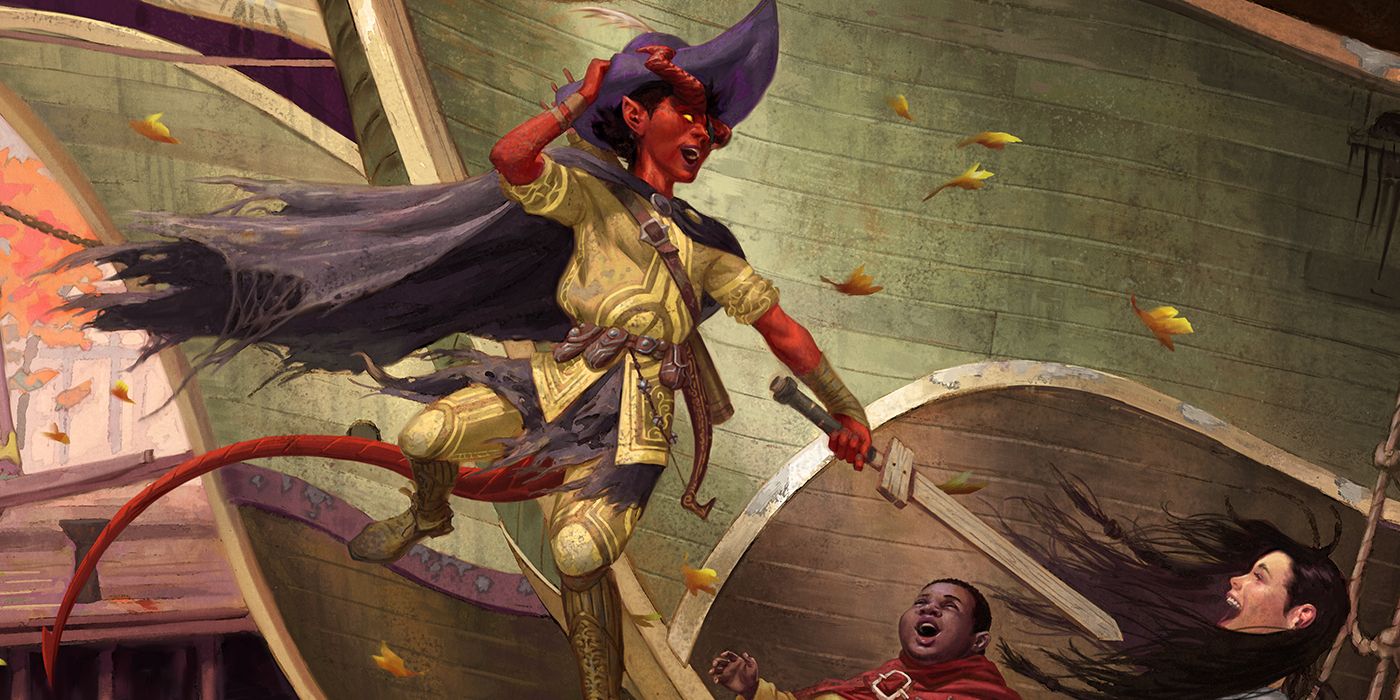Alignment is a mechanic of Dungeons & Dragons that even the newest players have likely heard of. It has become popular to apply D&D alignments to characters in popular TV shows, video games, and even to use the Dungeons & Dragons alignment chart to describe personal aesthetics and ideas. However, alignment types in Dungeons & Dragons can actually have important, and sometimes game-changing, effects for a character and their party.
All characters in a Dungeons & Dragons campaign have a type of alignment. This even includes most creatures and the gods of the realm the campaign is being held in. Character alignments can vary greatly, from the Lawful Neutral Paladin intent on obeying the ways of their oath, to the Chaotic Good Wizard who will do anything required to save a town, even if it means magically burning a few things in the process. Gods in D&D also have a wide range of alignments, which can affect those who take an oath under them. The Raven Queen of the Forgotten Realms is a Lawful Neutral, meaning she will analyze a situation and react according to her own morals and personal beliefs. However, Ghaunadaur is Chaotic Evil, and wishes to assert dominance over those who follow him, following no laws or restrictions.
To pick the correct Dungeons & Dragons alignment, players will need to look at the driving force of their character. This can be done by looking at backstories, which can help determine what a character's overall motivations are. They may have grown up in a poor, crumbling town where they had to fight to survive. This could create a Chaotic Neutral character who does what they must to stay alive. This D&D alignment type would make a good Rogue or Bard. A backstory where the character's parents were killed by wealthy lords or a monarch can produce a desire for revenge, potentially creating a Lawful Evil character. They may choose to kill anyone who appears to have wealth, but they never target the poor. Lawful Evil Dungeons & Dragons characters will engage in acts of violence or evil as long as they fit a personal set of morals and restrictions.
Dungeons & Dragons Alignments: What They Are And How They Work
Below is the list of Dungeons & Dragons alignments currently in place or 5th Edition gameplay according to DnD5e.info. Before selecting an alignment, players will want to read through each option carefully, and weigh how it interacts with their character's personality. It is also important to consider how it might affect future choices made when confronted with difficult decisions in gameplay.
- Lawful Good - Those with this alignment in D&D will do what is right according to society. For example, a Fighter who will only act based on the laws of the country they serve and protect.
- Neutral Good - Those with this alignment in D&D will do what they can within their power to help those in need, but without going to extreme measures. For example, a Druid who will heal forests, but won't engage in violence unless absolutely needed.
- Chaotic Good - Those with this alignment in D&D will act regardless of consequence, but their heart is in the right place. For example, a Wizard who robs a storehouse to provide the poor with supplies.
- Lawful Neutral - Those with this alignment in D&D will act based on the laws, moral codes, and values they personally hold. For example, a Monk who refuses to help those who he feels can help themselves, and interference would change a predestined outcome.
- Neutral - Otherwise known as "True Neutral", those with this alignment in D&D don't take sides, and often will avoid making choices with heavy consequences. For example, a Bard who defers to the party instead of making action deciding choices.
- Chaotic Neutral - Those with this alignment in D&D follow their own ideals, and put their own safety and needs above any other situation. For example, a Rogue who will back down from a quest or encounter if they fear they could be harmed in the process.
- Lawful Evil - Those with this alignment in D&D will take what they want, but within a set of rules and restrictions. An example of this character is Strahd Von Zaravich of The Curse of Strahd campaign. He will slowly take what he wants from others, but within the limits of his own personal vows.
- Neutral Evil - Those with this alignment in D&D will take whatever they can and do whatever they feel they can safely get away with, including murder. An example of this would be a Goblin who kills an NPC in their sleep for their treasure, even though the NPC had done nothing to them and the gold could have been taken without a death.
- Chaotic Evil - Those with this alignment in D&D will do whatever they can to insight chaos, destruction, and death. For example, an Orc who becomes a Dungeons & Dragons murder Hobo and kills everyone in a tavern when they don't get what they asked for at the bar.
It is important to remember that alignments are fluid. Character growth throughout a campaign can offer those with certain morals, ideals, or standards a chance to grown and improve, or devolve and corrode during the course of a Dungeons & Dragons campaign. A true Neutral character could learn to take risks and assert themselves to be a better asset to their party, or a Lawful Good character could see their own morals cause the death of a town, resulting in a spiral into self-doubt and depression until they hit Neutral Evil. With that in mind, a player may purposefully choose an alignment that offers their character a chance to grown and change throughout the story.
The most important part about picking an alignment in D&D is personal comfort levels. While some players may feel confident and emotionally okay playing a character with an Evil alignment, others may prefer to stay on the Good or Neutral side to prevent engaging in gameplay that could step past personal boundaries. Because roleplay and immersion are key parts of a Dungeons & Dragons campaign, choosing alignments players feel confident acting out helps keep the campaign enjoyable not just for them, but the entire party, as they work together to tackle their objectives.
Source: DnD5e.info


